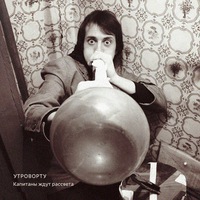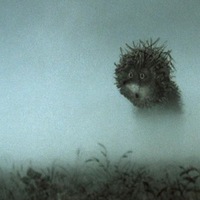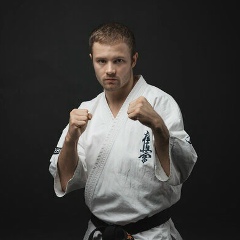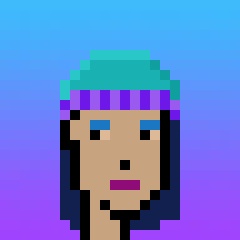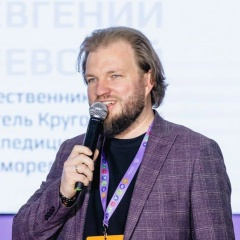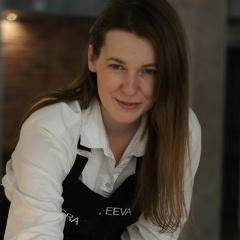После дискуссии , организованной фондом "Pro Arte", про инклюзию в творческих практиках возникло несколько живых и важных мыслей.
Творческий процесс с людьми с особенностями развития действительно сложнее организовать, чем с людьми с условной нормой развития. Нельзя это игнорировать, нужно иметь в виду, что в таком процессе понадобятся тьюторы, помощники, так называемые переводчики или абилитаторы, то звено взаимодействия, которое позволяет устранять барьеры.
Когда мы работаем в рамках не реабилитационного творчества, а полноценного "профессионального" творческого процесса стоит подумать о том, что инклюзия позволяет создавать новую эстетику, новый язык, и это чрезвычайно ценно для художника.
Был задет вопрос нормы, социальный философ озвучила мнение о том, что норма есть некая договоренность, не более того. В социальном процессе выглядит это, конечно, так. Но есть еще и биологический, и психологический процесс, который устроен так, чтобы человек максимально эффективно использовал ресурсы и развивался. Норма - это некий функционально наиболее приемлемый и эффективный способ выстраивания социальных процессов, некий "станок", который обеспечивает выживание с минимальной затратой ресурсов. Психические, биологические и социальные процессы "скатываются" в норму. Стоит об этом помнить, и не питать иллюзий, что на заводах появятся люди с особенностями развития, пока основными целями производства будет максимальная скорость, максимальное количество, минимальная себестоимость. То же можно перенести и на образовательный процесс, и на любой другой. Как только среди целей деятельности появляется, например, выстраивание максимально разнообразных и доверительных социальных отношений для всех людей, составляющих общество ( почему это необходимо, можно уже сейчас спросить у нейробиологов - https://vk.com/@newtonew-neirobiologiya-garmonichnyh-otnosh…) , тогда инклюзия становится естественной и необходимой.
К вопросу "профессиональное творчество" или "арт-терапия" очень хорошей иллюстрацией стали ответы участников инклюзивного театра на вопрос : "Зачем вам театр?"
Вот несколько ответов:
- опыт, возможность что-то поменять в рутине жизни, что-то осознать про себя и про людей, возможность к саморазвитию
- повзрослеть, узнать картину мира других людей, прививаются поведенческие нормы, легче избавляться от поведенческих стереотипов
- дарит ощущение "я полезен, я нужен"
- в творчестве я свободен, раскован, нужен другим людям
- театр как способ прожить разные роли, которые, может быть, в жизни по многим причинам недоступны.
В этих ответах очень много про социальную абилитацию и развитие личности, и пока совсем не очень много про художественную форму и процесс. Арт-терапия очень нужна и важна для этих людей, и они искренне и просто об этом говорят. В современной России большинство людей с особенностями развития остаются депривированными, и им действительно нужно расширять спектр социального взаимодействия, соотносить свою картину мира с картинами мира других людей, и инструментом для этого может стать расширение спектра выразительных средств в групповом творческом процессе.
Творчество - это пространство, в котором все без исключения люди могут встретиться. Людям с особенностями развития часто достаточно сложно встретиться ( в смысле глубокой доверительной встречи) в социуме, а в творческом процессе гораздо меньше ограничений, конвенций и договоренностей про норму, чем в социальном, поэтому и встреча состоится наверняка.
Еще одна мысль, которая пришла мне в голову : есть "особые" люди среди условно нормальных, которым интересны особые люди - люди с особенностями развития. Этот интерес появляется по разным причинам. Было бы здорово понять, как на место страха перед людьми с особенностями пришел бы интерес, как этот интерес к непонятному, непохожему, странному развить, воспитать в обществе, не только на основе сострадательного момента, но и на основе любознательности, энтузиазма, радости узнавания.
Еще об одном хочется поразмышлять. На творчество можно посмотреть как на ремесло, в котором достигается мастерство, и как на экзистенциальный процесс - своего рода искусство как ритуал, в котором происходит общение, интеграция, соотнесение с бОльшим.
Инклюзивный творческий процесс по своей природе может сбалансировать эти две точки зрения на творчество ( и не уйти в механическое обучение,потому что оно затруднительно, и не превратиться в мистерию, потому что присутствуют абилитационные задачи). Поэтому, может быть, творческий продукт такого процесса получается эмоционально значимым, захватывающим, и, главное, полноценным.
Творческий процесс с людьми с особенностями развития действительно сложнее организовать, чем с людьми с условной нормой развития. Нельзя это игнорировать, нужно иметь в виду, что в таком процессе понадобятся тьюторы, помощники, так называемые переводчики или абилитаторы, то звено взаимодействия, которое позволяет устранять барьеры.
Когда мы работаем в рамках не реабилитационного творчества, а полноценного "профессионального" творческого процесса стоит подумать о том, что инклюзия позволяет создавать новую эстетику, новый язык, и это чрезвычайно ценно для художника.
Был задет вопрос нормы, социальный философ озвучила мнение о том, что норма есть некая договоренность, не более того. В социальном процессе выглядит это, конечно, так. Но есть еще и биологический, и психологический процесс, который устроен так, чтобы человек максимально эффективно использовал ресурсы и развивался. Норма - это некий функционально наиболее приемлемый и эффективный способ выстраивания социальных процессов, некий "станок", который обеспечивает выживание с минимальной затратой ресурсов. Психические, биологические и социальные процессы "скатываются" в норму. Стоит об этом помнить, и не питать иллюзий, что на заводах появятся люди с особенностями развития, пока основными целями производства будет максимальная скорость, максимальное количество, минимальная себестоимость. То же можно перенести и на образовательный процесс, и на любой другой. Как только среди целей деятельности появляется, например, выстраивание максимально разнообразных и доверительных социальных отношений для всех людей, составляющих общество ( почему это необходимо, можно уже сейчас спросить у нейробиологов - https://vk.com/@newtonew-neirobiologiya-garmonichnyh-otnosh…) , тогда инклюзия становится естественной и необходимой.
К вопросу "профессиональное творчество" или "арт-терапия" очень хорошей иллюстрацией стали ответы участников инклюзивного театра на вопрос : "Зачем вам театр?"
Вот несколько ответов:
- опыт, возможность что-то поменять в рутине жизни, что-то осознать про себя и про людей, возможность к саморазвитию
- повзрослеть, узнать картину мира других людей, прививаются поведенческие нормы, легче избавляться от поведенческих стереотипов
- дарит ощущение "я полезен, я нужен"
- в творчестве я свободен, раскован, нужен другим людям
- театр как способ прожить разные роли, которые, может быть, в жизни по многим причинам недоступны.
В этих ответах очень много про социальную абилитацию и развитие личности, и пока совсем не очень много про художественную форму и процесс. Арт-терапия очень нужна и важна для этих людей, и они искренне и просто об этом говорят. В современной России большинство людей с особенностями развития остаются депривированными, и им действительно нужно расширять спектр социального взаимодействия, соотносить свою картину мира с картинами мира других людей, и инструментом для этого может стать расширение спектра выразительных средств в групповом творческом процессе.
Творчество - это пространство, в котором все без исключения люди могут встретиться. Людям с особенностями развития часто достаточно сложно встретиться ( в смысле глубокой доверительной встречи) в социуме, а в творческом процессе гораздо меньше ограничений, конвенций и договоренностей про норму, чем в социальном, поэтому и встреча состоится наверняка.
Еще одна мысль, которая пришла мне в голову : есть "особые" люди среди условно нормальных, которым интересны особые люди - люди с особенностями развития. Этот интерес появляется по разным причинам. Было бы здорово понять, как на место страха перед людьми с особенностями пришел бы интерес, как этот интерес к непонятному, непохожему, странному развить, воспитать в обществе, не только на основе сострадательного момента, но и на основе любознательности, энтузиазма, радости узнавания.
Еще об одном хочется поразмышлять. На творчество можно посмотреть как на ремесло, в котором достигается мастерство, и как на экзистенциальный процесс - своего рода искусство как ритуал, в котором происходит общение, интеграция, соотнесение с бОльшим.
Инклюзивный творческий процесс по своей природе может сбалансировать эти две точки зрения на творчество ( и не уйти в механическое обучение,потому что оно затруднительно, и не превратиться в мистерию, потому что присутствуют абилитационные задачи). Поэтому, может быть, творческий продукт такого процесса получается эмоционально значимым, захватывающим, и, главное, полноценным.
After a discussion organized by the Pro Arte Foundation about inclusion in creative practices, several vivid and important thoughts arose.
The creative process with people with special needs is indeed more difficult to organize than with people with a conditional rate of development. This cannot be ignored, it must be borne in mind that in such a process we will need tutors, assistants, so-called translators or facilitators, that link of interaction that allows you to remove barriers.
When we work within the framework of not a rehabilitation creativity, but a full-fledged “professional” creative process, it is worth considering that inclusion allows you to create a new aesthetic, a new language, and this is extremely valuable for the artist.
The question of the norm was asked, the social philosopher voiced the opinion that the norm is a kind of agreement, nothing more. In the social process, this certainly looks like this. But there is also a biological and psychological process that is designed so that a person makes the most efficient use of resources and develops. The norm is a certain functionally most acceptable and effective way of building social processes, a kind of “machine tool” that ensures survival with a minimum expenditure of resources. Mental, biological and social processes are slipping into the norm. It is worth remembering this and not harboring the illusion that people with special needs will appear at the factories, while the main goals of production will be maximum speed, maximum quantity, minimum cost. The same can be applied to the educational process, and to any other. As soon as among the goals of activity, for example, building the most diverse and trusting social relations for all people who make up the society appears (why this is necessary, you can already ask neuroscientists - https://vk.com/@newtonew-neirobiologiya-garmonichnyh-otnosh ...), then the inclusion becomes natural and necessary.
To the question "professional creativity" or "art therapy", the answers of the participants of the inclusive theater to the question: "Why do you need a theater?"
Here are some answers:
- experience, the ability to change something in the routine of life, to realize something about yourself and about people, the opportunity for self-development
- grow up, get to know the worldview of other people, behavioral norms are instilled, it is easier to get rid of behavioral stereotypes
- gives the feeling "I'm useful, I need you"
- in creativity I am free, relaxed, needed by other people
- Theater as a way to live different roles, which, perhaps, are unavailable for many reasons in life.
In these answers, there is a lot about social habilitation and personality development, and so far there is not much about the art form and process. Art therapy is very necessary and important for these people, and they sincerely and simply talk about it. In modern Russia, most people with developmental disabilities remain deprived, and they really need to expand the spectrum of social interaction, relate their picture of the world to the pictures of the world of other people, and expanding the range of expressive means in a group creative process can become a tool for this.
Creativity is a space in which all people without exception can meet. It is often difficult for people with special needs to meet (in the sense of a deep confidential meeting) in society, and in the creative process there are much fewer restrictions, conventions and understandings about the norm than in the social, so the meeting will take place for sure.
Another thought that came to my mind: there are “special” people among the relatively normal people who are interested in special people - people with developmental peculiarities. This interest appears for various reasons. It would be great to understand how interest would come to the place of fear before people with disabilities, how to develop and educate this interest in incomprehensible, dissimilar, strange in society, not only on the basis of a compassionate moment, but also on the basis of curiosity, enthusiasm, joy of recognition.
I want to think about one more thing. You can look at creativity as a craft in which mastery is achieved, and as an existential process - a kind of art as a ritual in which communication, integration, correlation with more takes place.
An inclusive creative process by its nature can balance these two points of view on creativity (and not go into mechanical learning, because it is difficult, and not turn into a mystery, because there are habilitation tasks). Therefore, perhaps, the creative product of such a process turns out to be emotionally significant, exciting, and, most importantly, complete.
The creative process with people with special needs is indeed more difficult to organize than with people with a conditional rate of development. This cannot be ignored, it must be borne in mind that in such a process we will need tutors, assistants, so-called translators or facilitators, that link of interaction that allows you to remove barriers.
When we work within the framework of not a rehabilitation creativity, but a full-fledged “professional” creative process, it is worth considering that inclusion allows you to create a new aesthetic, a new language, and this is extremely valuable for the artist.
The question of the norm was asked, the social philosopher voiced the opinion that the norm is a kind of agreement, nothing more. In the social process, this certainly looks like this. But there is also a biological and psychological process that is designed so that a person makes the most efficient use of resources and develops. The norm is a certain functionally most acceptable and effective way of building social processes, a kind of “machine tool” that ensures survival with a minimum expenditure of resources. Mental, biological and social processes are slipping into the norm. It is worth remembering this and not harboring the illusion that people with special needs will appear at the factories, while the main goals of production will be maximum speed, maximum quantity, minimum cost. The same can be applied to the educational process, and to any other. As soon as among the goals of activity, for example, building the most diverse and trusting social relations for all people who make up the society appears (why this is necessary, you can already ask neuroscientists - https://vk.com/@newtonew-neirobiologiya-garmonichnyh-otnosh ...), then the inclusion becomes natural and necessary.
To the question "professional creativity" or "art therapy", the answers of the participants of the inclusive theater to the question: "Why do you need a theater?"
Here are some answers:
- experience, the ability to change something in the routine of life, to realize something about yourself and about people, the opportunity for self-development
- grow up, get to know the worldview of other people, behavioral norms are instilled, it is easier to get rid of behavioral stereotypes
- gives the feeling "I'm useful, I need you"
- in creativity I am free, relaxed, needed by other people
- Theater as a way to live different roles, which, perhaps, are unavailable for many reasons in life.
In these answers, there is a lot about social habilitation and personality development, and so far there is not much about the art form and process. Art therapy is very necessary and important for these people, and they sincerely and simply talk about it. In modern Russia, most people with developmental disabilities remain deprived, and they really need to expand the spectrum of social interaction, relate their picture of the world to the pictures of the world of other people, and expanding the range of expressive means in a group creative process can become a tool for this.
Creativity is a space in which all people without exception can meet. It is often difficult for people with special needs to meet (in the sense of a deep confidential meeting) in society, and in the creative process there are much fewer restrictions, conventions and understandings about the norm than in the social, so the meeting will take place for sure.
Another thought that came to my mind: there are “special” people among the relatively normal people who are interested in special people - people with developmental peculiarities. This interest appears for various reasons. It would be great to understand how interest would come to the place of fear before people with disabilities, how to develop and educate this interest in incomprehensible, dissimilar, strange in society, not only on the basis of a compassionate moment, but also on the basis of curiosity, enthusiasm, joy of recognition.
I want to think about one more thing. You can look at creativity as a craft in which mastery is achieved, and as an existential process - a kind of art as a ritual in which communication, integration, correlation with more takes place.
An inclusive creative process by its nature can balance these two points of view on creativity (and not go into mechanical learning, because it is difficult, and not turn into a mystery, because there are habilitation tasks). Therefore, perhaps, the creative product of such a process turns out to be emotionally significant, exciting, and, most importantly, complete.

У записи 22 лайков,
3 репостов,
1183 просмотров.
3 репостов,
1183 просмотров.
Эту запись оставил(а) на своей стене Настасья Шахински












